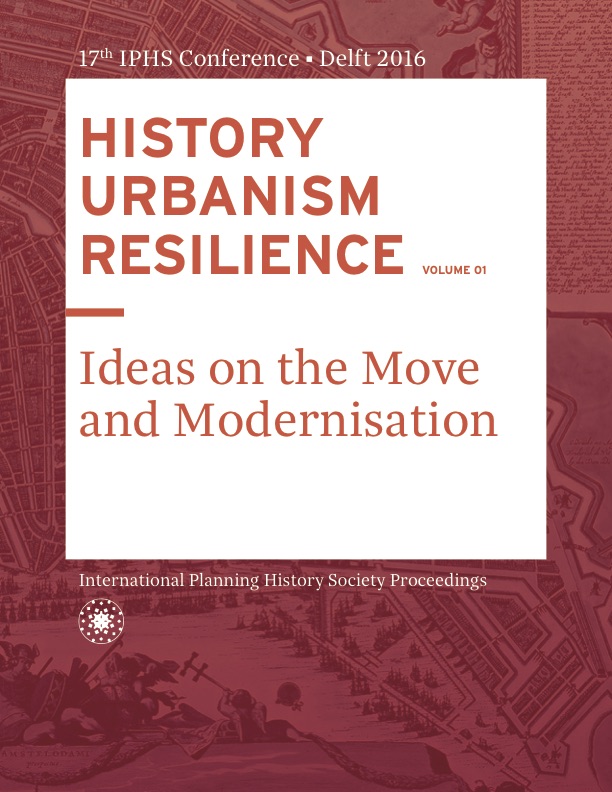Beyond Soviet Model: Institutional Change and Planning Evolution in Maoist Era’s China
DOI:
https://doi.org/10.7480/iphs.2016.1.1217Abstract
Pre-reform Chinese urban planning is often described as “Soviet Planning Mode”, thus overlook the impact of Mao. The planning history in Chinese context shall perceive it in the vein of its historical development, this article explores planning practice in Maoist Era’s China exclude “Soviet Planning Mode”. In order to trace the Planning Evolution due to institutional Changes, research selects three typical planning events which are Capital Beijing Planning at the initial stage of new China, People’s Commune Planning in the late 1950s, Daqing Planning Pattern in 1960s. The study reveals that urban planning from 1950s-1960s experienced the ideological thought of prudency, learning, idealism and decentralism, its evolving process link to Mao’s political and economic policies closely. Besides, in later life of Mao’s China, urban planning Thoughts shows a Hybridism state with both Soviet mode and local gene.References
Bibliography
Bo, Yibo. Ruogan zhongda juece he shijian huigu [A look back to several major decisions and events].
Beijing: Zhonggong dangshi chubanshe, 2008 (in Chinese).
Bray, David. Social Space and Governance in Urban China: The Danwei System from Origins to Reform.Stanford: Stanford University Press, 2005.
Dong, Zhikai. “Cong jianshe gongye chengshi dao tigao chengshi jingzhengli 1949–2001.” [From
Constructing Industrial Cities to Improving City Competitiveness]. Forward Position in Economics
(2003): 4–9 (in Chinese).
Hou, Li. “Dui jihua jingji tizhi xia zhongguo chengzhen hua de lishi xin jiedu.” [Historical Interpretation of China’s Urbanization in Planned Economy. Urban Planning Forum 2010(2) (in Chinese).
Huang, Li. “A Study on the History of Chinese Modern City Planning, 1949–1965.”[Zhongguo Xiandai Chengshi Guihua Lishi Yanjiu] PhD diss., WuhanUniversity of Science and Technology, 2006 (in Chinese)
Lu, Duanfang. Remaking Chinese Urban Form: Modernity, Scarcity and Space, 1949–2006. New York:
Routledge, 2006.
Li Hao. “Liang-Chen Project” and “Luoyang Mode”: Comparison and Inspiration on the Planning Pattern of Constructing a New Town Near the Old City. Urban Planning International, 2015(3) (in Chinese).
Qian, Zhu. From the First Five-Year Plan to the Cultural Revolution: the Pre-Reform Urban Transformation of Hangzhou, China.Planning Perspectives, 2015(1).
Zhao, Chunlan. “Social-spatial Transformation in Mao’s China: Settlement Planning and Dwelling
Architecture Revisited, 1950s-1070s.” PhD diss., Katholieke Universiteit Leuven Belgium, 2007.

